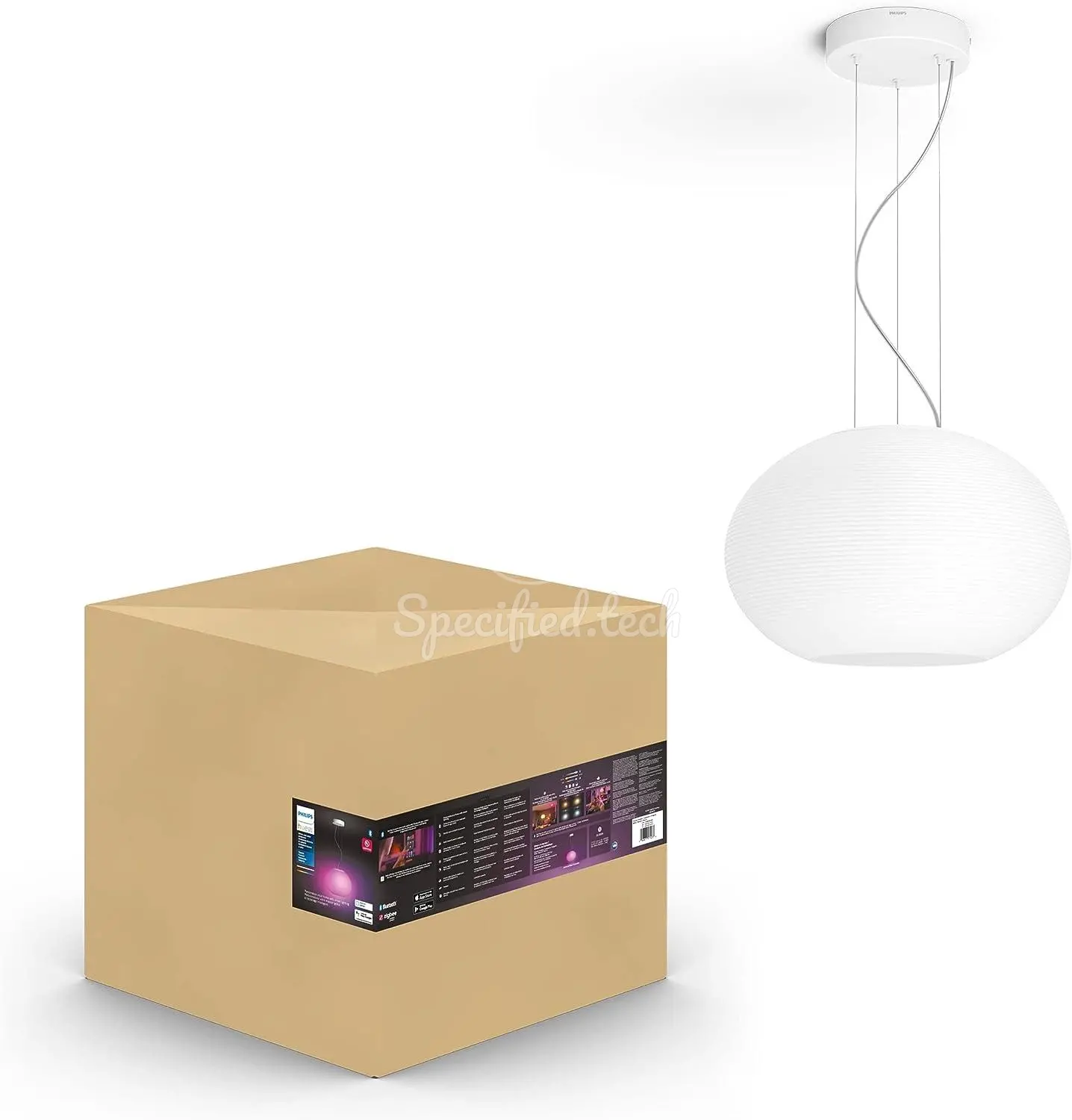
Specifications
With its product Hue Flourish Pendant Light , the brand Philips presents an innovative smart home solution for intelligent lighting control.
Communication
A smarthome device only becomes truly smart when it integrates and communicates with other devices. For this task, Philips relies on the following technologies to ensure communication and possible automations:
- Wireless Bluetooth connection technology
- Zigbee protocol
Supported functions
The following features/functions are supported by this device:
- Switch the light on or off via your smartphone or the Bridge.
- Adjustment of the light intensity.
- Changing the color temperature like warm or cool white.
- Multiple colors can be selected in the smartphone app.
- The luminaire can be configured to emit a white light.
- Over-the-air updates
- Automatic switch-on behavior.
Third party integrations
Don't want to use the integration/bridge that the manufacturer Philips specifies? That's not a problem. See the list below for all verified integrations that work with Hue Flourish Pendant Light :
- Zigbee2MQTT
- Google Home
- Alexa Smart Home
Light
Many lamps allow the color temperature to be adjusted via an app. This model offers a color temperature range from 2200 kelvin to 6500 kelvin. The unit lumen is a measurement to determine the amount of light emitted per given time. Conversely, this means that the higher the lumen, the brighter a lamp shines. As a rule, for example, 500-600 lumens per square meter are sufficient to illuminate a bathroom. For comparison, the Hue Flourish Pendant Light is given as 3000. The power consumption might also be relevant for some. Philips has indicated this with 31 w.
Design
If we look at the design, we inevitably have to look at the smart light's casing. Complete systems are often offered particularly pretty or compact. Unfortunately, this also means that opening the housing is not provided and changing the light source is not possible. However, if it is a smart device with a lamp socket, for example, the illuminants can be changed in the simplest way. In this case, it is unfortunately not possible to change the bulbs used from Hue Flourish Pendant Light because they are permanently installed. This is usually the case with smart light bulbs and cannot be solved without problems, for example at Philips. The housing is made of plastics and comes in a white color.

